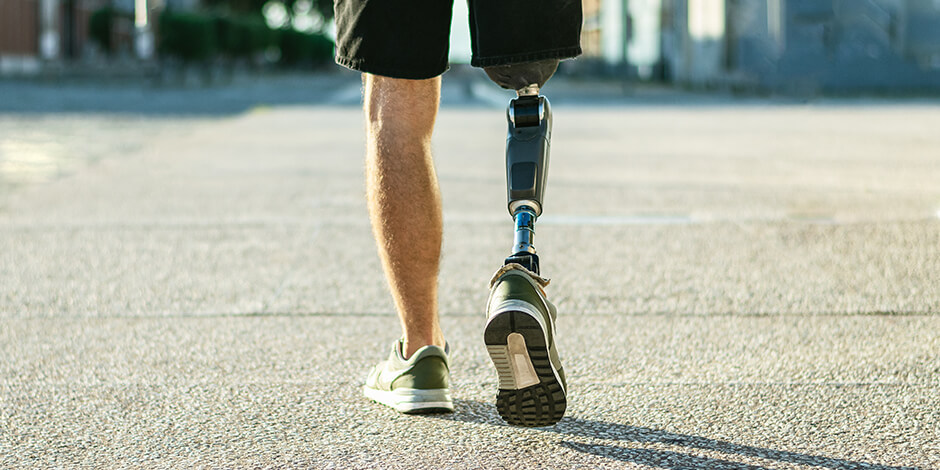What happens when it is or becomes impossible to button a shirt? Pull up a pair of jeans? Hook a bra? Tie shoelaces? Those of us who are not faced with these challenges take such basic functions of daily life for granted.
Think about it. A hook and eye as a closure on a bra. Buttons. Shoelaces. Zippers. Everyone has grappled with these items at some point in their lives. But if you had limited mobility due to a lost limb, how would you get dressed? You’d likely need help, which you wouldn’t want because it would make you feel less capable. Depending upon your individual challenge, even clothing options that accommodate medical apparatuses can be extremely limited. Most of the time, when they are found, these garments resemble hospital gowns rather than a stylish t-shirt.
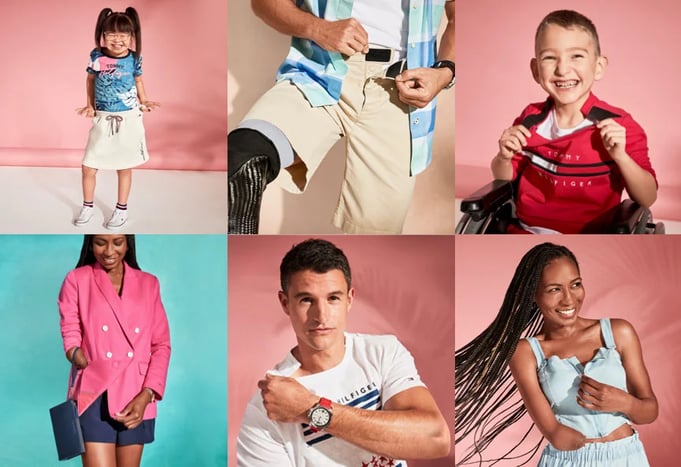
Source: Tommy Hilfiger Adaptive
That's why many brands have begun offering assortments of adaptive clothing. Adaptive clothing refers to garments that have been specifically designed for people with physical limitations. Usually incorporating simpler fasteners and non-standard shapes, these items make getting dressed easier for these individuals.
Let's take a look at some brands who are leading the charge in this space.
Adaptive Clothing Brands
Differently Enabled
Source: Differently Enabled
With one billion people living in the world today with restricted mobility or disabilities, some have become inspired to change the landscape. Differently Enabled exists to help these people, "look good, feel good, and do good," according to their tagline. After his post-COVID-19 intensive care experience, Craig Crawford founded Differently Enabled. Following his discharge from the intensive care unit, Craig was encouraged by his occupational therapist to switch to wearing his own clothes for a faster recovery, and to feel more like himself again, rather than wearing hospital gowns. He arranged to have his favorite clothes brought into the hospital the next day, but he quickly learned the hard way that his clothes were no longer functional for him. Craig had lost his strength and dexterity to untie his drawstring waist or pull down his waistband in time to reach the bathroom. This situation led Craig to bridge the gap between fashion and functionality.
Differently Enabled consists of a laboratory of designers, engineers, technicians, and data scientists who create customized products and services. The company helps people with disabilities look their best, feel confident, and pursue their dreams by offering clothing solutions for their everyday needs.
"We do nothing without or before our customer's input. Our unique intake process allows us to understand our customer's disability, lifestyle, clothing likes, clothing dislikes and requirements," said Crawford. "Because we manufacture on demand, technology allows us to customize with our customer."
Differently Enabled revealed their first collection during London Fashion Week in September 2022 as part of the London Represents Show, "the most sustainable and inclusive show in the UK," according to show organizers Samanta Bullock, Gaia Beck, and Saumen Kar.
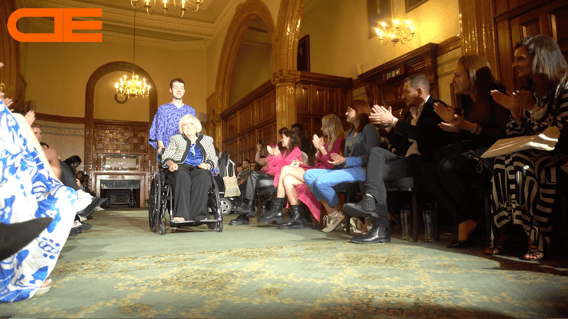
Liberare
Many have developed the ideas for their brands by witnessing someone they love struggle with dressing themselves up in something special for the bedroom. That’s how 23-year-old Emma Butler came up with her new intimate apparel collection. She saw first-hand what a dehumanizing experience shopping for lingerie was for disabled women after her mother was diagnosed with a chronic illness and was no longer able to find functional and fashionable clothing that she could easily put on unassisted. Shopping for lingerie was particularly difficult. Emma saw that her mother’s lingerie options were limited at best, and the ones that existed were primarily marketed and designed for the elderly on medical websites.
Emma’s adaptive lingerie company, Liberare (originally Intimately), recently received a $1M seed round investment led by the British Fashion Council, its first-ever investment. Liberare, which means “to set free,” challenges the stereotype that portrays disabled women as undesirable through a collection that uses magnets and loose grips to revolutionize the intimates industry by making fashionable and functional lingerie that anyone can put on. Emma started the brand while still a student at Brown University to offer sexy, accessible, and comfortable lingerie to empower the more than 600 million women around the world who have a disability that affects the way they dress. Liberare is a beautiful, inclusive, and functional collection that uses technology to reimagine the way bras and underwear have been designed for centuries.
Kizik
Michael Pratt is the serial entrepreneur who started Kizik hands-free shoes and HandsFree Labs, Inc. The company is innovating functional footwear that doesn’t require bending over either to put them on or to take them off. Kizik began with a Kickstarter campaign and built up its offering to the point where it is now available in Nordstrom and other national retailers. In 2019, Nike made a strategic investment in HandsFree Labs, which gives the footwear giant an exclusive partnership to license HandsFree’s intellectual property. HandsFree Lab’s CEO, Monte Deere, told Hypebeast, “’We often state the problem this way: ‘No one likes the hassle of tying their shoes, and some people can’t.’’ Hypebeast went on to note that hands-free technology has the “potential to affect everyone: it improves everyone’s life and is life-changing for those who have a condition that makes tying their shoes difficult or impossible.”
Tommy Hilfiger
Tommy Hilfiger is certainly a household name, but many people may not know that he is also a pioneer in the adaptive clothing market. He created Tommy Adaptive in 2016 to give children who had trouble getting dressed by themselves more fashionable options with greater functionality. He told the Today Show, “Nobody was doing it and when the idea came to me, I thought it was a natural for us because we are a very inclusive brand and we’re really proud to be leading the way now for adaptive fashion globally.” He started offering adult adaptive clothing a year later and is still one of the only major designers offering adaptive clothing. He said that the initial idea occurred to him because he has children on the autism spectrum and understood that they have different needs when it comes to getting dressed. But at the end of the day, they still want to look like the other kids in their communities. Tommy Adaptive includes the same designs as the main Tommy Hilfiger collection but uses different closures, like Velcro, magnets, hoops, and loops to make it easier to get dressed.
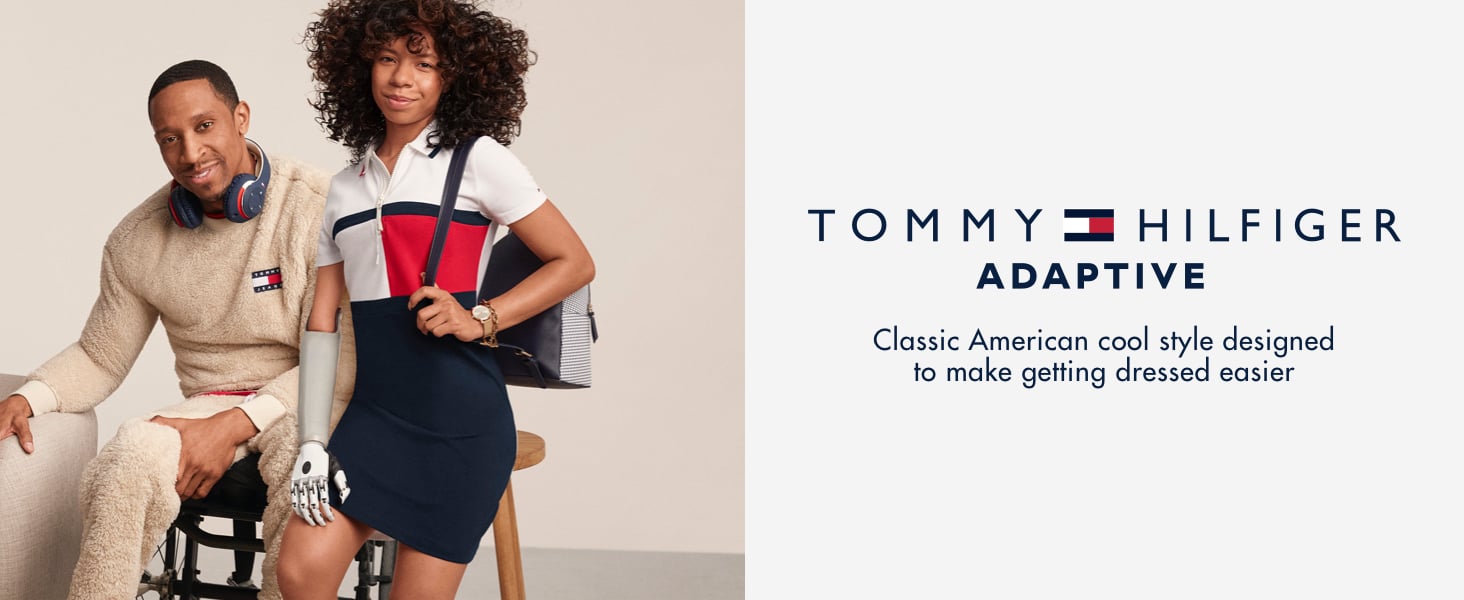 Source: Tommy Hilfiger
Source: Tommy Hilfiger
What Adaptive Clothing Means for the Retail Industry
The adaptive clothing market has been estimated by Vogue Business to be worth about $400B by 2026. As awareness grows for the challenges many have with getting dressed, and younger Gen Z consumers demand greater inclusivity from brands, more designers like Tommy Hilfiger, and brands like Nike, are poised to address this important market demographic. However, brands and retailers need to think about how they will execute these offerings.
One critical difference between designing a collection based simply on creativity and developing fashionable adaptive clothing is that the adaptive brands must engage in ongoing dialog with their consumer communities and medical professionals. Liberare, Kizik, and Tommy Hilfiger Adaptive engage in ongoing conversations with their intended audiences. In essence, they have been co-creating these collections through actionable voice of the customer data. It’s imperative for adaptive clothing designers to understand how they can evolve their products to be better, more functional, and easier to put on and wear. By using the latest technology solutions, such as 3D virtual sample creation, many of the real challenges presented by designing adaptive clothing can be more easily overcome by more designers and brands.
A testament to just how far the fashion industry has come in a few short years was be on display next month. At the next New York Fashion Week, The Runway of Dreams ™ Foundation made its return to the runway with an evening fashion show on September 12th 2022 with “A Fashion Revolution,” an adaptive clothing fashion show presented by Kohl’s. Adaptive clothing and footwear was worn by 60 different models, showing off pieces from brands including Kohl’s, Tommy Hilfiger Adaptive, Zappos.com, Target, JC Penney, No Limbits, and Stride Rite.
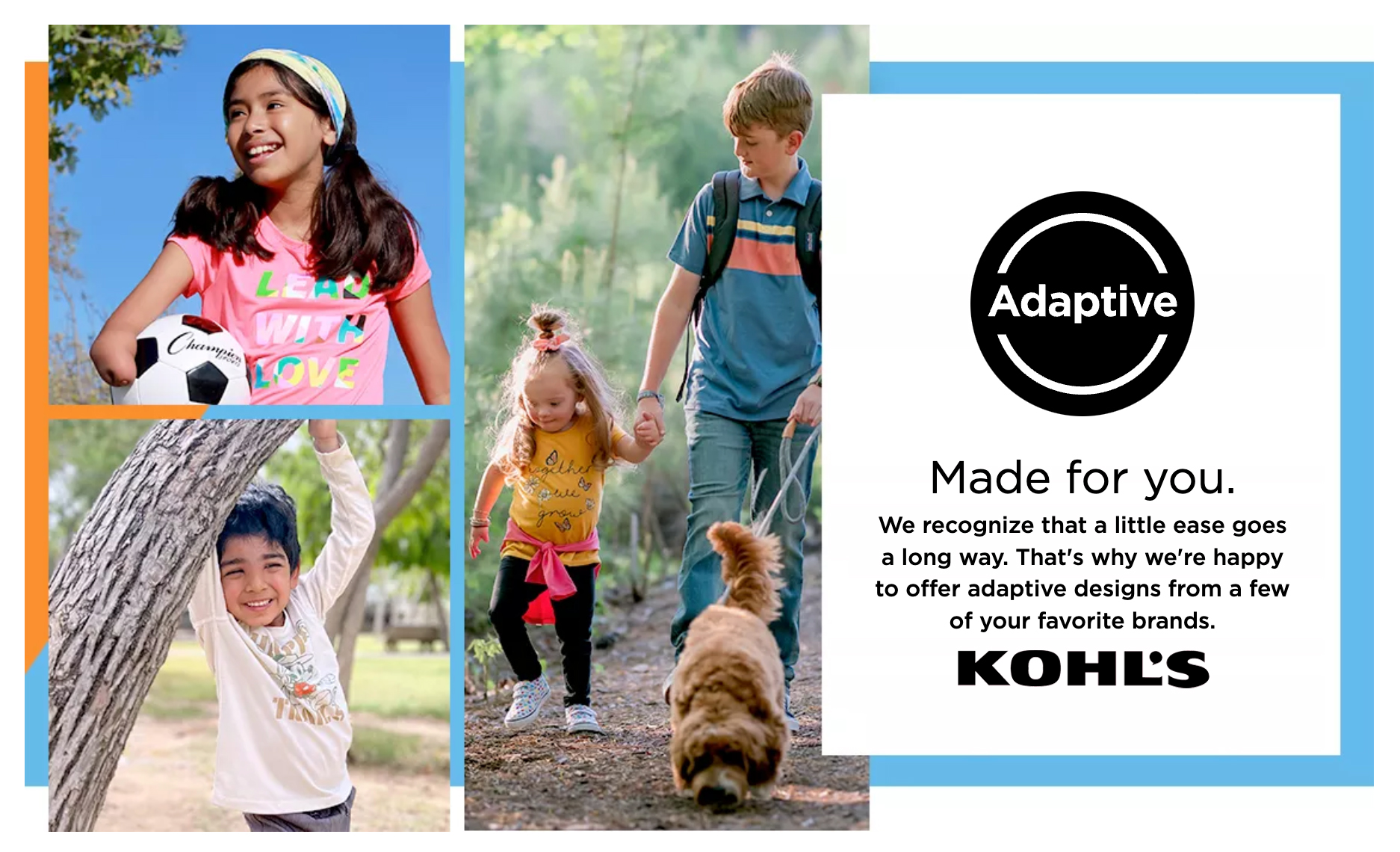
Runway of Dreams founder and CEO, Mindy Scheier, had been a designer on the INC team as well as a stylist for Saks Fifth Avenue. She started Runway of Dreams when her son, who was born with Muscular Dystrophy, “dreamed of wearing a pair of jeans like everyone else.” After designing him a pair that he could put on over his leg braces, Mindy went on to work with Tommy Hilfiger on his adaptive line as well as with other major brands. She said, “Year after year I continue to be humbled and excited by the new brands who are entering the adaptive space….The fashion industry is listening, and we are honored to help present these brands to the massive community of potential consumers."




